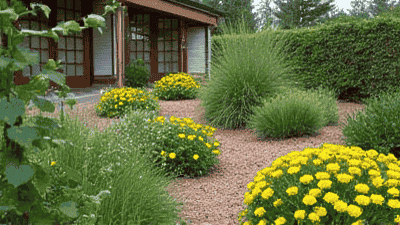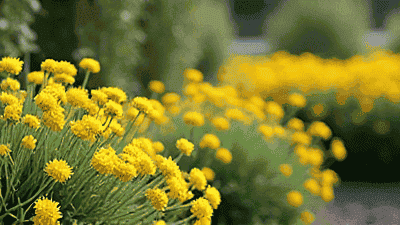
In an era marked by the detrimental effects of climate change, water scarcity has become an increasingly pressing concern. Regions around the world are experiencing prolonged droughts, leading to a greater need for sustainable water management practices in landscaping and gardening. Xeriscaping is an innovative approach that emphasizes the use of drought-resistant plants and efficient irrigation methods to create beautiful, low-maintenance, and water-efficient gardens.
Xeriscaping is a landscaping philosophy designed to conserve water through the use of drought-resilient plants and effective gardening practices. The term "xeriscape" is derived from the Greek word "xeros," meaning dry, and "scape," meaning to shape or design. This sustainable approach focuses on creating gardens that require minimal water while maximizing beauty and environmental benefits.
Historically, xeriscaping has roots in arid and semi-arid regions, where water scarcity is a constant challenge. However, its principles can be applied in various climates to create resilient gardens that thrive under diverse conditions.
The fundamentals of xeriscaping comprise a set of principles that guide gardeners in creating water-efficient and sustainable landscapes. These principles include:
Planning and Design: Careful consideration of garden layout and plant selection is essential. Grouping plants with similar water needs together can improve water management and reduce waste.
Soil Improvement: Enhancing soil quality is crucial for moisture retention and overall plant health. Amending the soil with organic matter, such as compost, can improve drainage, nutrient availability, and moisture retention.
Drought-Resistant Plants: Choosing plants that require minimal water is the cornerstone of xeriscaping. Native and adapted species are often the best choices, as they are already acclimatized to local climates.
Efficient Irrigation: Utilizing advanced irrigation methods, such as drip irrigation or rainwater harvesting, allows for targeted watering, minimizing water wastage and ensuring that plants receive the moisture they need.
Mulching: Applying mulch around plants helps retain soil moisture, suppress weeds, and regulate soil temperature. Organic mulch, such as wood chips or bark, adds nutrients to the soil as it decomposes.
Maintenance: Regular maintenance, including pruning and pest management, is vital for the health of a xeriscaped garden. Minimizing chemical inputs and focusing on organic practices supports a thriving ecosystem.
Use of Hardscaping: Incorporating hardscaping elements, such as pathways, patios, and rock gardens, can enhance the aesthetic appeal of xeriscaped gardens while reducing the area that requires watering.

Adopting xeriscaping practices offers multiple benefits, both for individuals and the environment as a whole. Here are some of the key advantages of implementing xeriscaping in your garden:
The most significant benefit of xeriscaping is its ability to conserve water. By utilizing drought-resistant plants and efficient irrigation methods, gardeners can significantly reduce their water consumption. This is especially important in areas prone to drought or water shortages.
Xeriscaped gardens are typically low-maintenance compared to traditional landscapes. Drought-resistant plants require less frequent watering, fewer chemical inputs, and less mowing and trimming, allowing gardeners to devote their time to other activities.
Xeriscaping promotes the use of native and adapted plants, which support local wildlife and contribute to biodiversity. These plants provide habitats for pollinators, birds, and beneficial insects, creating a thriving garden ecosystem.
By reducing the need for synthetic fertilizers and pesticides, xeriscaping minimizes the negative impact on local ecosystems and waterways. Healthier soil and reduced runoff contribute to a more sustainable environment.
Xeriscaped gardens can be stunningly beautiful, showcasing a diverse array of colors, textures, and shapes. The use of hardscaping and ornamental features enhances visual interest and creates an inviting outdoor space.
Implementing xeriscaping can lead to significant cost savings over time. Reduced water usage results in lower water bills, while lower maintenance requirements decrease expenditures on landscaping services and supplies.
As climate patterns shift, drought-resistant gardening practices help prepare gardens for changing conditions. Xeriscaping fosters resilience against unpredictable weather and allows gardeners to adapt to future challenges.
Choosing the right plants is crucial to the success of xeriscaping. Drought-resistant plants are often characterized by unique adaptations that make them capable of thriving in arid conditions. Here are some categories of drought-resistant plants to consider:
Native plants are well-suited for specific regions as they have evolved to tolerate local climate conditions. Incorporating native plants in your xeriscaped garden helps conserve water and supports local wildlife. Examples of native plants in various regions include:
Succulents and cacti are renowned for their ability to store water in their leaves, stems, and roots. These plants thrive in dry environments and can add unique textures and colors to your garden. Popular options include:
Ornamental grasses are highly adaptable and can add movement and texture to a xeriscaped garden. Many grasses tolerate drought conditions and contribute to erosion control. Examples include:
Drought-tolerant perennials return year after year, providing long-lasting beauty in the garden without excessive water needs. Some reliable options include:
While many annuals require significant water, some varieties have been bred for drought tolerance. Incorporating drought-resistant annuals can enhance seasonal color in a xeriscaped garden. Options include:

Once you have selected your drought-resistant plants, it is time to implement your xeriscaping plan. Follow these steps to successfully create a water-efficient garden:
Conduct a thorough assessment of your garden space. Consider factors such as sunlight, soil type, existing vegetation, and drainage. Understanding your site's unique conditions will help inform plant selection and design.
Design a garden layout that groups plants with similar water needs together. Consider arranging your garden in zones, placing drought-tolerant plants in sunny areas and moisture-loving plants in shaded or protected spots.
Utilize hardscaping elements, such as pathways, decorative stones, or patios, to create focal points and reduce the area that requires watering.
Improving your soil will enhance moisture retention and support plant health. Amend the soil with organic matter, such as compost or well-rotted manure, to improve drainage, nutrient availability, and moisture-holding capacity.
Test your soil to determine its pH and nutrient levels. Based on the results, consider adding minerals or amendments to create an optimal growing environment for your chosen plants.
When planting, make sure to follow spacing guidelines provided for each species. Proper spacing allows for airflow and prevents competition for resources.
Dig holes that are wide and deep enough to accommodate plant roots, and ensure that they are planted at the appropriate depth. Water newly planted specimens thoroughly to help them establish.
Implement an efficient irrigation system to water your xeriscaped garden effectively. Consider the following options:
Applying a layer of mulch around your plants is essential for moisture retention and weed suppression. Organic mulch, such as wood chips, straw, or leaves, breaks down over time and adds nutrients to the soil.
Apply a 2 to 4-inch layer of mulch, ensuring it does not touch the stems of your plants to prevent rot. Mulching not only conserves moisture but also moderates soil temperatures and suppresses weeds.
Regular monitoring and maintenance are crucial for the success of your xeriscape garden. Water new plants until they are established, and adjust watering schedules based on seasonal weather patterns.
Prune and deadhead plants as needed to promote healthy growth and prevent overcrowding. Monitor for pests and diseases, implementing organic pest control strategies to address issues.
While xeriscaping offers numerous benefits, it may present some challenges. Below are common challenges and potential solutions:
Newly planted drought-resistant plants may initially require more water as they establish their root systems. Provide regular watering for the first few weeks to ensure healthy growth, even in a xeriscaped garden.
Not all soils are ideal for xeriscaping. Sandy soils may drain too quickly, while clay soils may retain too much moisture. Amend soil types with compost or other organic materials to improve moisture retention and drainage.
In some regions, the availability of drought-resistant plants may be limited. Research local nurseries or seek online suppliers that specialize in native or drought-tolerant species to find suitable options for your area.
Some gardeners may worry that xeriscaping can appear sparse or unattractive. Incorporating a mix of ornamental plants, varying textures, colors, and hardscape elements can create an attractive and engaging landscape.

As climate change continues to impact weather patterns and water availability, xeriscaping is likely to gain further prominence as a gardening method. The future of xeriscaping may include:
Innovative Plant Breeding: Ongoing research into developing more drought-resistant plant varieties can offer gardeners additional options for xeriscaping.
Urban Applications: As cities grow, integrating xeriscaping into urban landscapes can conserve water, improve air quality, and enhance aesthetics in areas with limited natural resources.
Government Policies: Increased awareness of drought issues may lead governmental support and incentives for xeriscaping practices through education and funding programs.
Community Engagement: Neighborhoods may promote community gardens that incorporate xeriscaping, facilitating education and resource-sharing among residents.
Xeriscaping offers a sustainable, water-efficient approach to gardening that is especially vital in the face of climate change and water scarcity. By utilizing drought-resistant plants and implementing effective garden practices, gardeners can create beautiful landscapes that conserve water and enhance local ecosystems.
As we embrace the principles of xeriscaping, we not only promote environmental sustainability but also cultivate resilience in our gardens, allowing them to thrive even under challenging conditions. With careful planning, thoughtful plant selection, and a commitment to sustainable practices, anyone can transform their landscape into a flourishing xeriscape.
By harnessing the power of drought-resilient plants and making informed gardening decisions, you can contribute to a more sustainable future—one where gardens not only enhance our lives but also protect our precious natural resources for generations to come.